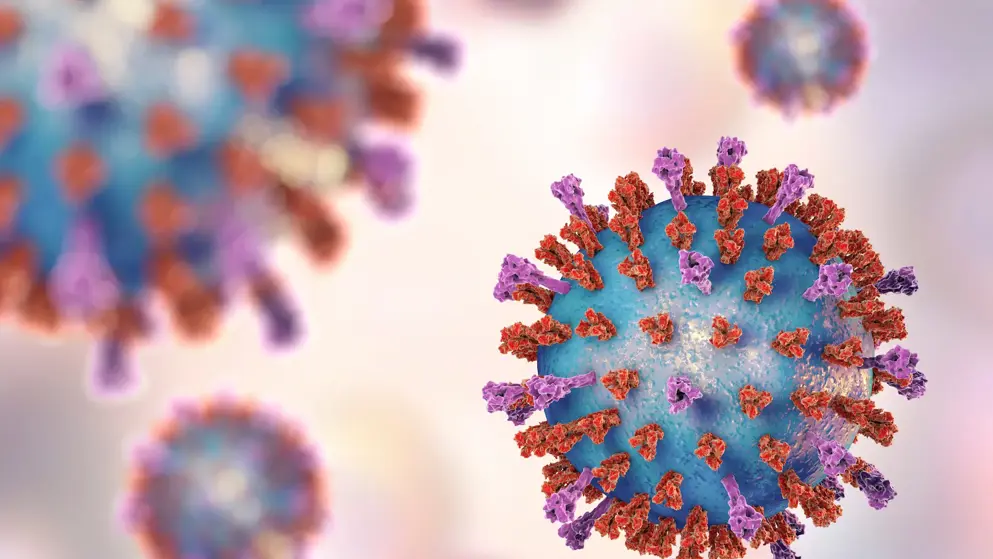
Respiratory Syncytial Virus (RSV)
What are the risk factors for severe RSV?
Risk factors for severe RSV in children and infants includes prematurity, low birth weight, male sex, immune disorders, neuromuscular disorders, chronic lung disease or congenital heart disease in children aged two years or younger and being aged ≤6 months at the start of the RSV season6,7,11–14. Risk for severe RSV in adults is increased in people aged 65 years and older, those who are immunosuppressed or immune compromised and those with chronic lung or heart disease, diabetes mellitus, or end-stage renal disease8,15–17.
What are the current RSV treatment strategies?
There are currently no approved treatments for RSV. Ribavirin has been used off-label to help manage severe RSV infections, but its use is limited due to an unfavourable safety profile5,18. RSV treatment therefore usually centres around providing symptomatic relief, which may require hospitalisation and ventilatory support5,19.
Is there an RSV vaccine?
The only preventative therapy for RSV is palivizumab, but this drug is not available to adults20. Developing vaccines for older adults can be challenging, however various RSV vaccines are being investigated, with several Phase II and Phase III clinical trials currently underway5. Most of these investigational vaccines are based on the F protein of RSV21.
Independent, grant-supported education for Respiratory Syncytial Virus (RSV)
of interest
are looking at
saved
next event
Related news and insights
Related Guidelines
References
- Respiratory syncytial virus (RSV): symptoms, transmission, prevention, treatment - GOV.UK. https://www.gov.uk/government/publications/respiratory-syncytial-virus-rsv-symptoms-transmission-prevention-treatment/respiratory-syncytial-virus-rsv-symptoms-transmission-prevention-treatment. Accessed 9 November 2021.
- Chatterjee A, Mavunda K, Krilov LR. Current state of respiratory syncytial virus disease and management. Infect Dis Ther. 2021;10:5–16.
- Shi T, Denouel An, Tietjen AK, Campbell I, Moran E, Li X. Global disease burden estimates of respiratory syncytial virus-associated acute respiratory infection in older adults in 2015: A systematic review and meta-analysis. J Infect Dis. 2020;222(Suppl 7):S577–S583.
- Falsey AR, Hennessey PA, Formica MA, Cox C, Walsh EE. Respiratory Syncytial Virus Infection in Elderly and High-Risk Adults. Exp Lung Res. 2005;31(Suppl 1):77.
- Domachowske JB, Anderson EJ, Goldstein M. The future of respiratory syncytial virus disease prevention and treatment. Infect Dis The. 2021;10:47–60.
- Díez-Domingo J, Pérez-Yarza EG, Melero JA, Sánchez-Luna M, Aguilar MD, Blasco AJ, et al. Social, economic, and health impact of the respiratory syncytial virus: A systematic search. BMC Infect Dis. 2014;14(1):544.
- Centers for Disease Control and Prevention. RSV in infants and young children. https://www.cdc.gov/rsv/high-risk/infants-young-children.html. Accessed 9 November 2021.
- Centers for Disease Control and Prevention. RSV in older adults and adults with chronic medical conditions. https://www.cdc.gov/rsv/high-risk/older-adults.html. Accessed 9 November 2021.
- Lee N, Lui GCY, Wong KT, Li TCM, Tse ECM, Chan JYC, et al. High morbidity and mortality in adults hospitalized for respiratory syncytial virus infections. Clin Infect Dis. 2013;57(8):1069–77.
- National Foundation for Infectious Diseases. Respiratory syncytial virus in older adults: A hidden annual epidemic. A report by the National Foundation for Infectious Diseases. 2016. https://www.nfid.org/wp-content/uploads/2019/08/rsv-report.pdf. Accessed 9 November 2021.
- Resch B, Sultan Ali N, Professor A. Burden of respiratory syncytial virus infection in young children. World J Clin Pediatr. 2012;1(3):12.
- Geoghegan S, Erviti A, Caballero MT, Vallone F, Zanone SM, Losada JV, et al. Mortality due to respiratory syncytial virus burden and risk factors. Am J Respir. 2017;195(1):96–103.
- Shi T, Balsells E, Wastnedge E, Singleton R, Rasmussen ZA, Zar HJ. Risk factors for respiratory syncytial virus associated with acute lower respiratory infection in children under five years: Systematic review and meta-analysis. J Glob Health. 2015;5(2):020416.
- UK. Respiratory syncytial virus: The green book chapter 27a, 2015. 2015. https://www.gov.uk/government/publications/respiratory-syncytial-virus-the-green-book-chapter-27a. Accessed 9 November 2021.
- Stephens LM, Varga SM. Considerations for a respiratory syncytial virus vaccine targeting an elderly population. Vaccines. 2021;9(6):624.
- Prasad N, Walker TA, Waite B, Wood T, Trenholme AA, Baker MG, et al. Respiratory syncytial virus-associated hospitalizations among adults with chronic medical conditions. Clin Infect Dis. 2021;73(1):e158-63.
- Whimbey E, Ghosh S. Respiratory syncytial virus infections in immunocompromised adults. Curr Clin Top Infect Dis. 2000;20:232–55.
- Simões EA, Bont L, Manzoni P, Faroux B, Paes B, Figueras-Aloy J. Past, present and future approaches to the prevention and treatment of respiratory syncytial virus infection in children. Infect Dis Ther. 2018;7(1):87–120.
- Public Health England. Respiratory syncytial virus (RSV): Symptoms, transmission, prevention, treatment, 2021. https://www.gov.uk/government/publications/respiratory-syncytial-virus-rsv-symptoms-transmission-prevention-treatment. Accessed 9 November 2021.
- Synagis summary of product characteristics, 2021. https://www.medicines.org.uk/emc/product/6963/smpc. Accessed 9 November 2021.
- Sadoff J, de Paepe E, Haazen W, Omoruyi E, Bastian AR, Comeaux C, et al. Safety and immunogenicity of the Ad26.RSV.preF investigational vaccine coadministered with an influenza vaccine in older adults. J Infect Dis. 2021;223(4):699–708.


